Snappin’ Up Snapdragons
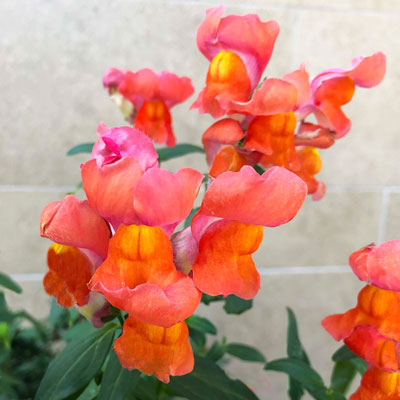
My dad got me excited about snapdragons. I was just a kid and he magically opened their “mouths” with his finger and thumb. He had some kind of a story to go with it, and I was hooked early on.
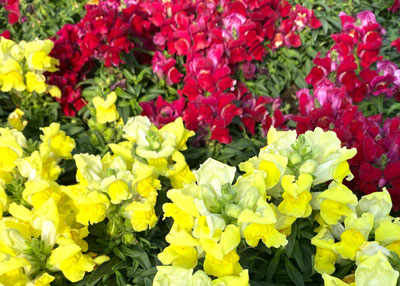
Probably 10 years later I saw a bed of Floral Carpet dwarf snapdragons growing in front of the old Floriculture Department greenhouses at Texas A&M. That was 1960. I loved them then, and I’ve loved the low-growing snaps ever since.
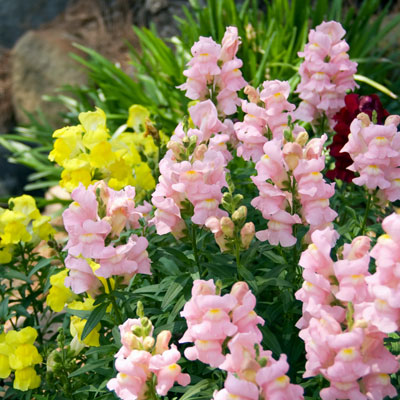
Breeders have been busy developing all kinds of snapdragons in the ensuing years. More colors. Individual colors for those who prefer single-color plantings. Brighter colors. Two-colored flowers. More blooms per stem. Longer bloom seasons. Double flowers. Flowers with snappers that would discourage pollination by bees. (When a snapdragon has been pollinated the flower’s task has been completed and the blossom falls off.)
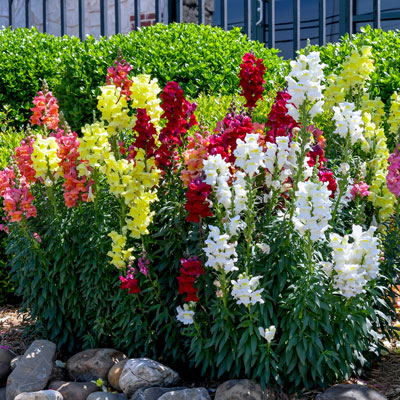
Now when you go into a garden center you’ll find dwarf selections like Montegos and trailing types (that grow to be 5-10 inches tall), intermediates (20-24 inches tall) including series such as Sonic, Liberty and Arrow, and the long-popular tall types like Rocket snapdragons (that grow to 30 inches and taller) that are used as cutflowers for floral design.
Snapdragons need cool weather to do their best. In the southern two-thirds of Texas they’re planted in fall (now) so that they can bloom over the late fall, winter and into mid-spring. However, they can also be planted in February if you find larger transplants already in bloom.
Here’s what snapdragons will need…
To get your very best results with these cheerful cool-season annuals, these are their basic requirements:
• Full sun.
• Highly organic garden soil rototilled to a depth of 10-12 inches.
• Incorporate 1 inch each of sphagnum peat moss, well-rotted compost, fully decomposed manure, finely ground pine bark mulch, and if you’re amending a clay soil, 1 inch of expanded shale.
• Rake to a gentle rise in the bed to ensure good drainage.
• Buy vigorous transplants from a reputable, full-time nursery.
• Plant them immediately.
• Space at the recommended distances.
• Water deeply immediately after planting.
• Apply high-nitrogen, water-soluble fertilizer with each watering to keep plants vigorous throughout their season.
• Should any of the plants actually set seed keep the fruit trimmed off. Setting seed slows or stops further production of flowers.
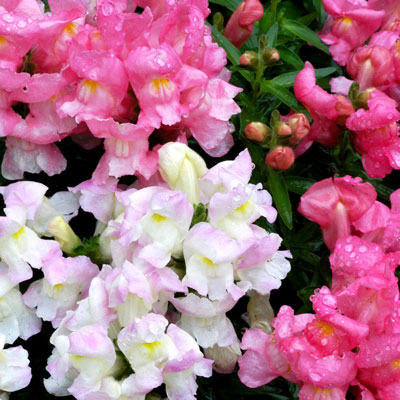
Best uses of snapdragons…
Here are a few of the really effective ways gardeners use snaps in their plantings.
• In containers. Low-growing types can be used as the “spiller” flowers around the edges of large pots. Intermediate types are the “thrillers” that get planted in the centers to add drama to the plantings.
• In floral beds, shorter types as borders and intermediate types as backdrops. If you tend to use smaller numbers of colors and fewer different types of plants in your plantings, choose a single variety/color of snaps. Otherwise, sprinkle a mixture throughout.
• The tallest types may require staking in windy areas. They may be best grown where they can be cared for in a specialized way. I’ve actually seen gardeners who wanted to use them for cutflowers grow them in wire mesh such as concrete reinforcing panels to keep them from toppling as they came into bloom. The stems can become very top-heavy when they’re laden with flowers.
